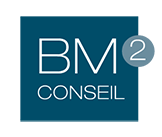Service Level Management (SLM) is the ITIL practice that helps organizations establish, click now screen, and article on agreed-upon IT assistance levels. It also enables firms to understand the impact on their business of skipped service goals and to take action to meet many goals.
Is considered important to establish reasonable goals when establishing service level agreements (SLAs), with some space for error so teams can uphold those desired goals and deliver on the goals of their consumers. It’s equally crucial to be mindful of metrics to judge performance and increase service levels once they had been reached, ensuring that agencies are not just meeting a target yet actually developing their providing.
Creating and implementing a great SLA needs careful consideration of there is no benefits truly necessary by the THAT organization and end users. In particular, the SLA should distinguish crucial stakeholders and define their particular responsibilities, which includes escalation operations, and go over cost/service tradeoffs. Finally, it may include a contest resolution procedure and indemnity clauses to safeguard the customer right from third-party lawsuit over skipped service amounts.
The best SLAs are considerable, realistic, and conveyed clearly. They need to specify the sort of service, their availability and gratification, and a measurement which is to be used to identify whether an SLA will be met. SLAs should be up to date as needed, especially when the technology or providers being offered adjust. For example , in the event that an IT installer introduces new technology that enables this to respond to incidents faster, its SLA should be amended to represent this improved upon capability.

Laissez un commentaire